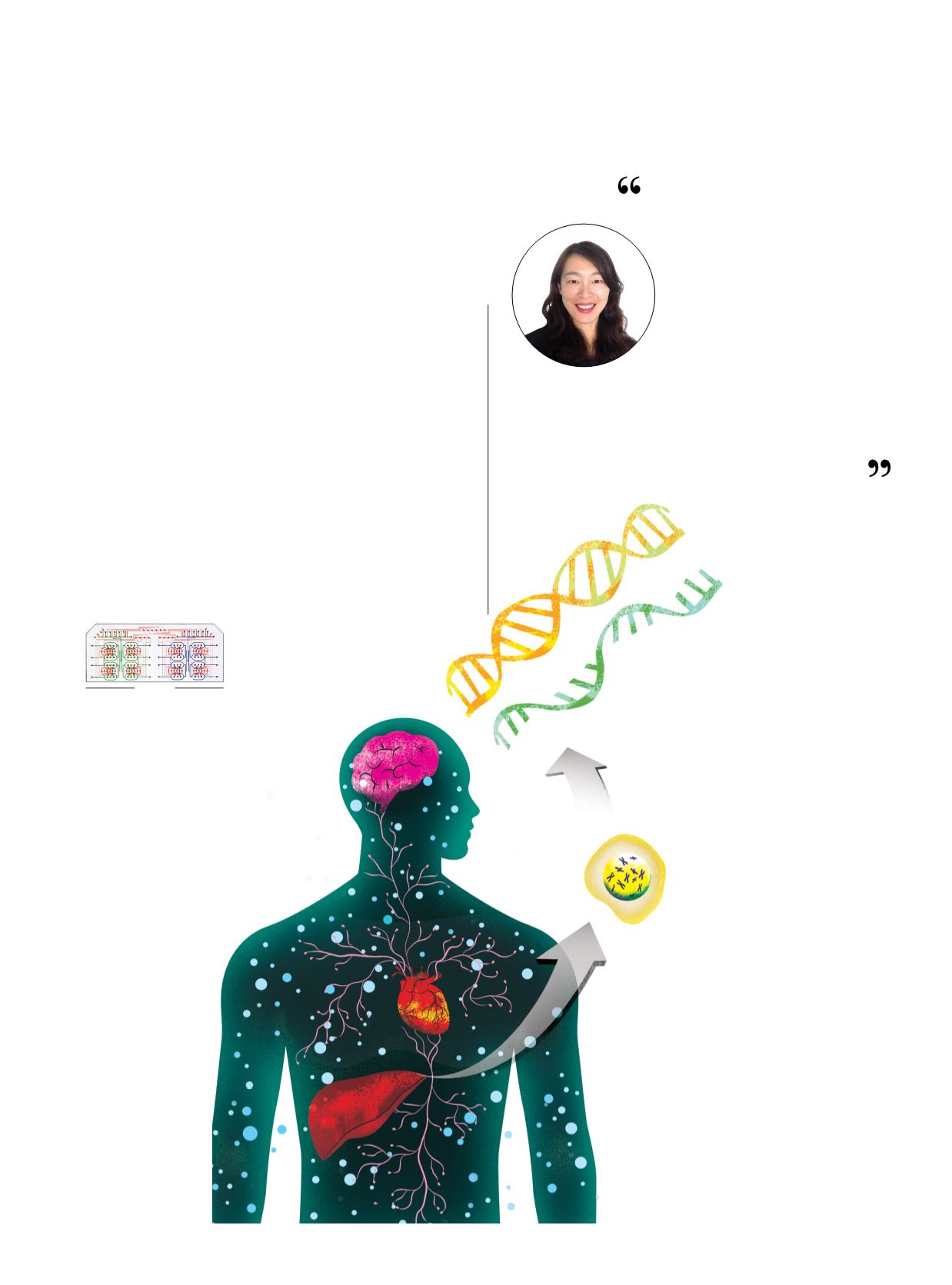
R E S E A R C H @ H K U S T
17
Imagine an interactive map of the human body, where you can
simply click on a certain cell and see what type of cell it is and
what it is doing, just like we can with Google maps. Despite
our bodies being composed of trillions of complex cell
types, such a map may not be too far in the future, thanks to
innovation by bioengineers such as Prof Angela Wu.
The early career academic is helping to drive forward
single-cell genomics, a recently emerging field that is enabling
vision and understanding of what we are made of at an
unprecedented resolution and complexity. Traditional
methods study millions of cells; but Prof Wu and her team are
unique even among one-cell researchers. While most study
DNA and RNA separately, the Wu lab is seeking to extract
both simultaneously to develop a more complete set of
information about a cell.
Prof Wu, who has been selected
as one of MIT Technology Review’s
2017 “10 Innovators Under
35” in Asia, is working on a
strategy for tagging DNA
and RNA so they can
be sequenced simultaneously. As a
technologist, she is also taking
advantage of novel microfluidic
device (“lab-on-a-chip”) designs.
“I like using microfluidic chips
because they offer automation, and,
with the very small volumes involved,
help improve the sensitivity of the assay
and the quality of the data.”
She is also well-equipped to
handle such data as one
of the first to come up
with the methodology
and framework for
analyzing ver y
complex single-cell
datasets, when
working as a
p o s t d o c t o r a l
fellow in Prof
Stephen Quake’s
group at Stanford
University.
Her contri-
bution as a life
scientist is her use
of these single-
MAPPING
OURSELVES
cell tools to learn more
about the origins of
disease, for example,
the fundamental reason
– “big bang event” – that initiates
a cancer. There are two current theories:
the first is that a stem cell goes rogue and
gives rise to a tumor, which can be discerned
by looking at RNA; the second is that cancer
results fromthe accumulation of a lifetime
of mutations in the genome, discerned at
the DNA level. “Through our technique
profiling both DNA and RNA in an
individual cell, we can see how
the two explanations fit together.
Such knowledge will really help
us arrive at an overall unifying
view of cancer initiation.”
While Prof Wu works on colon
and liver cancer, the findings are likely
to be applicable to many tissue types.
The techniques being developed by Prof
Wu are also highly relevant to the Human
Cell Atlas project. This global initiative was
launched in Fall 2016 by an international
community of leading scientists to create a
comprehensive reference map of different
human cell types and their networks to
better understand our health and how and
why things go wrong. With that will come
insight not only for scientists but for us all.
Prof Wu’s research has been published
in
Nature, Nature Methods, PLoS Genetics
and
Lab on a Chip,
among others.
Microfluidic chip
8.5cm
PROF ANGELA WU
Assistant Professor
of Life Science, Chemical
and Biological Engineering
Just as different people play
different roles in society,
different cells also have
different functions in an
organ. We can better
harness different cell
types for medicine if we
study and understand them at
the single cell level


